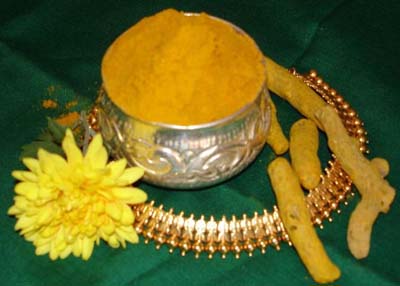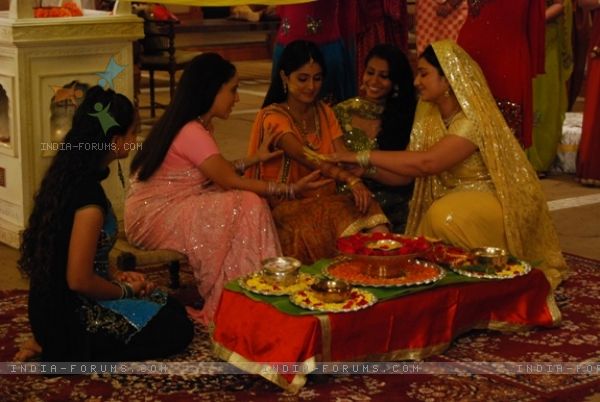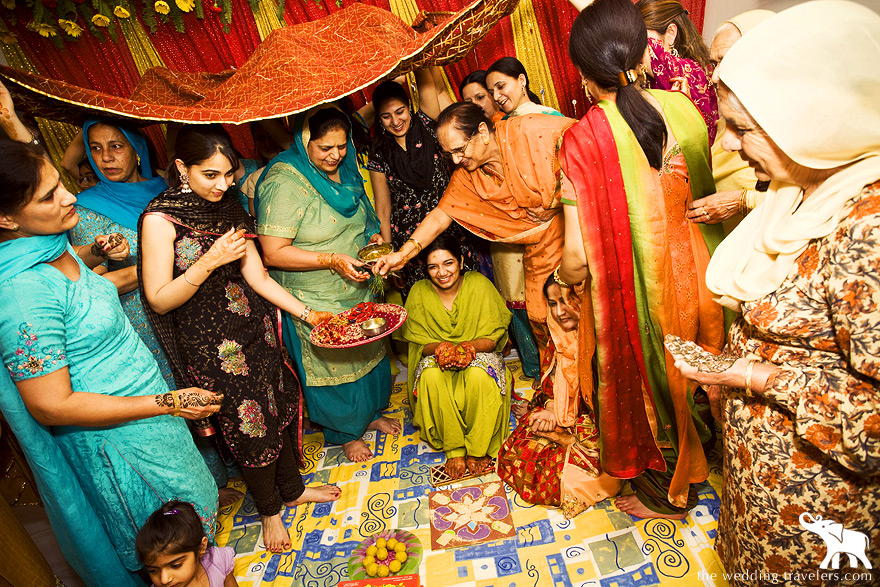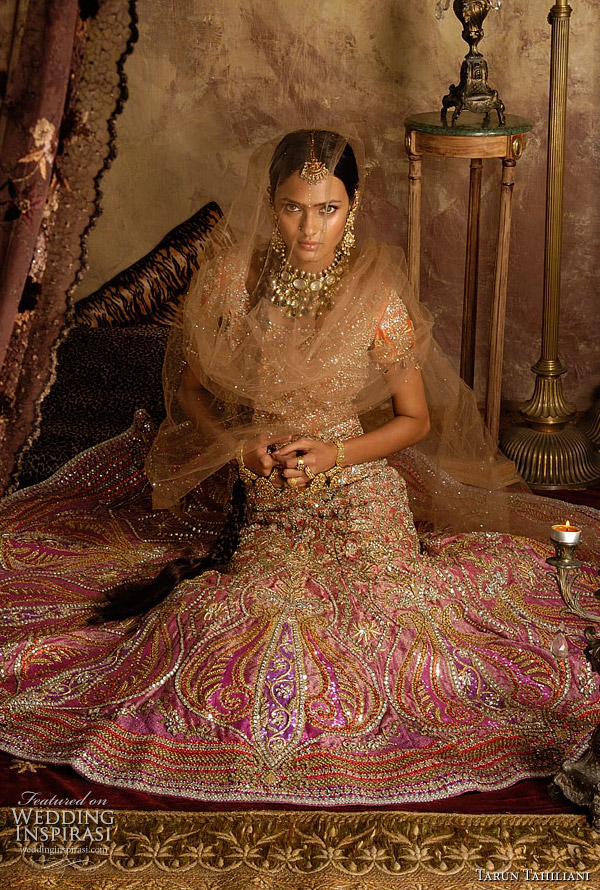Haldi Ceremony in Indian Weddings
In the Haldi ceremony (also known as Tel Baan in some cultures), the family members ‘prepare’ the bride and groom (in their respective homes) for the forthcoming wedding. They apply a paste, also known as ubtan, made from herbs, vegetable oils, fresh milk curds, sandalwood powder and primarily turmeric on the face, arms and feet of the bride and the groom. The ingredients used in this ceremony are known to be good for complexion and have been used for many ages. Its almost like an ancient Indian Spa Treatment!
[ad#Google Adsense]
All the ingredients for the ceremony are separately put in bowls made of clay, put together in a plate. The ingredients are applied by the means of brushes made of grass. The family members of the bride/groom take these grass brushes and dip them in the ingredients and apply it symbolically to their feet, knees, hands, shoulders and head seven times from bottom to top and then top to bottom. This is accompanied by some singing of folk songs.
As the ubtan is applied, it can get very playful for the bride/groom as well as the family members. At this time, the bride/groom are also supposed to give a portion of the paste to the unmarried girls/boys in the family. This is supposed to bring them a good looking husband/wife soon.
During the ceremony, kangana or sacred thread is tied on the right wrists of the bride and groom. The kangana is a red thread strung through an iron chaaku (small iron knife for protection), turmeric sticks, supari (areca nut, but commonly known as betel nut) and kaudis (shells). These are all symbols of good luck and to protect the bride and the groom from the evil eye and so that wedding happens without any obstacles.
Enjoy this haldi folk song: Banno teri ankhiyan.



 Stunning Sangeet Night of Sabrina and Ranvijay: Part II
Stunning Sangeet Night of Sabrina and Ranvijay: Part II Wedding Shopping in Mumbai: Tips and Recommendations
Wedding Shopping in Mumbai: Tips and Recommendations Tell everyone you are going to say ‘I-Do’, In Style!
Tell everyone you are going to say ‘I-Do’, In Style!
Saniya says
Your blog is so insightful, I learn new things each time I read about our traditions that were not explained to me growing up. Thank you so much! 🙂
neha says
Saniya – Thanks so much for reading 🙂 What other traditions did you see growing up? Are there more traditions that you would like to hear about?
Karishma says
do you know if the haldi needs to be applied at a certain time of the day or evening?
neha says
While traditions for haldi vary in different cultures, generally from my experience haldi ceremony is typically done in the morning or early afternoon.
Samantha says
Hi, does anyone know if the haldi ceremony has to happen right before the wedding or can it happen before the mehndi/sangeet night? Also, does anyone know what the tradition is in Oriya culture as I don’t believe there is a haldi ceremony. Thanks!
sam says
applying haldi to brides feet, knees, hands, shoulders and head … what does this symbolise?
neha says
Hi Sam – Haldi, which has many medicinal and health benefits, is also used in many beauty products in India. It is believed that applying haldi on bride adds to that wedding “glow”, as well as prevent her from getting sick. Please let me know if you have other questions.